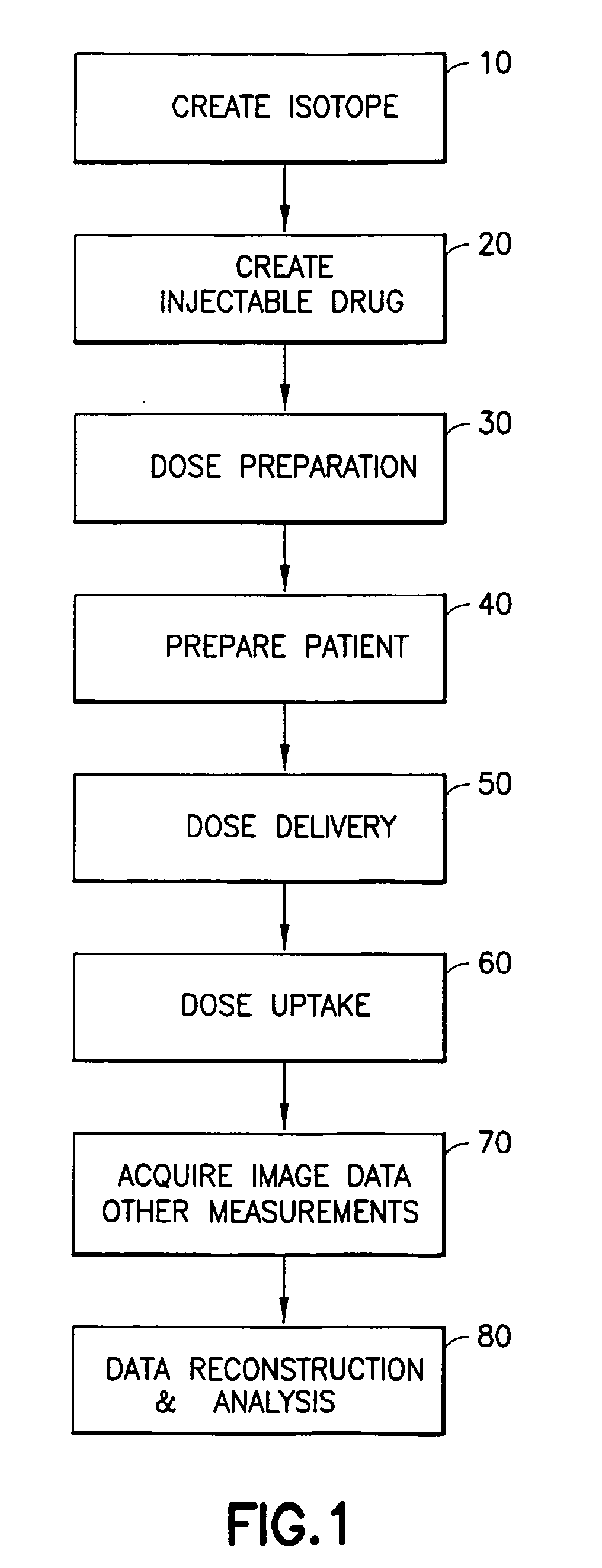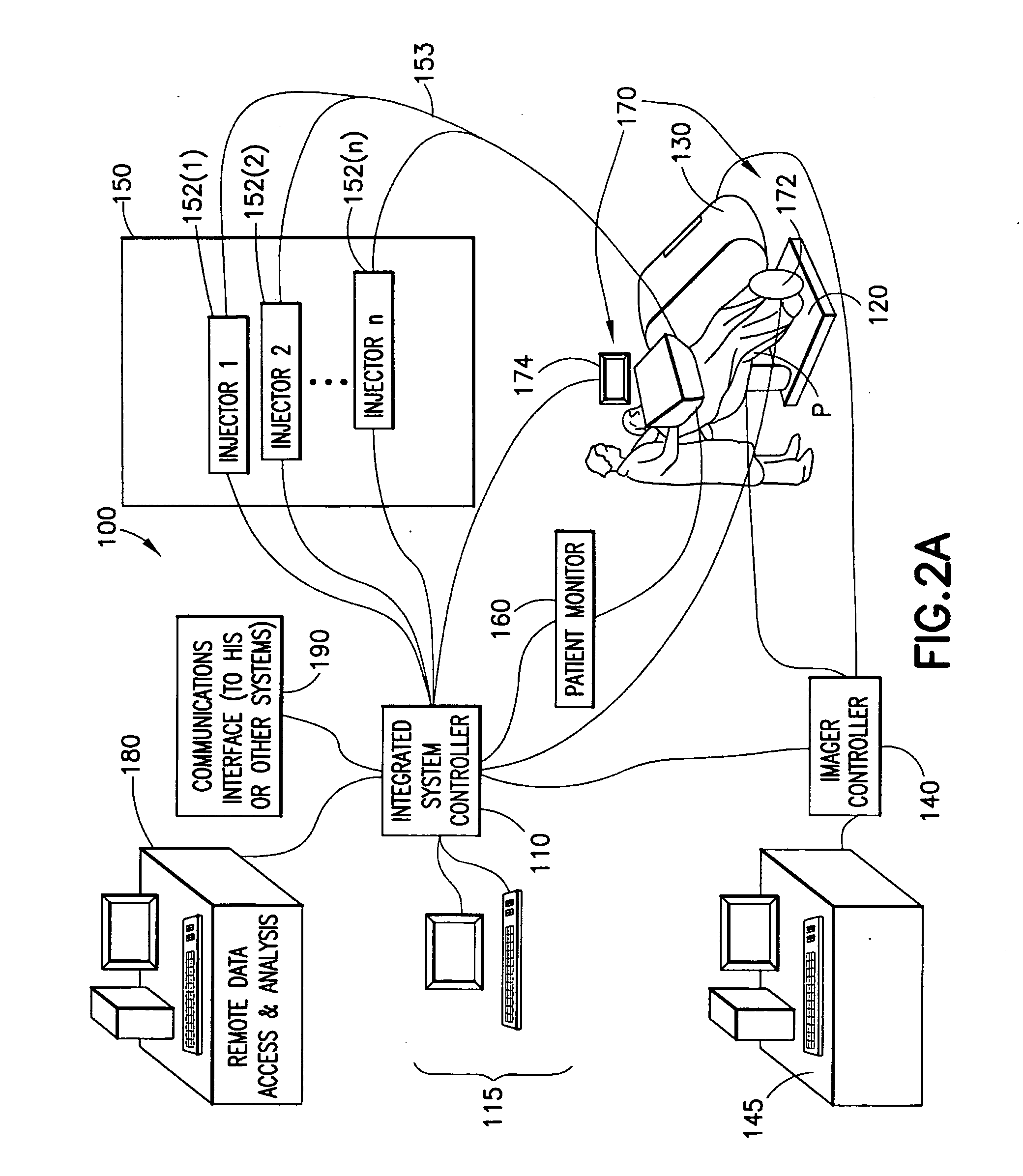Systems For Integrated Radiopharmaceutical Generation, Preparation, Transportation and Administration
a radiopharmaceutical and integrated technology, applied in the field of generation, preparation, and administration of pharmaceutical substances, can solve the problems of radiopharmaceutical agents used in imaging procedures and therapeutic procedures, hazardous to attending medical personnel, and toxic agents, and achieve the effects of reducing radioactive waste, facilitating use and cost, and improving safety for attending personnel
- Summary
- Abstract
- Description
- Claims
- Application Information
AI Technical Summary
Benefits of technology
Problems solved by technology
Method used
Image
Examples
Embodiment Construction
[0078]For purposes of the description hereinafter, spatial orientation terms, if used, shall relate to the referenced embodiment as it is oriented in the accompanying drawing figures or otherwise described in the following detailed description. However, it is to be understood that the embodiments described hereinafter may assume many alternative variations and configurations. It is also to be understood that the specific devices illustrated in the accompanying drawing figures and described herein are simply exemplary and should not be considered as limiting.
[0079]FIG. 1 is an exemplary flowchart showing a process for radiopharmaceutical generation, dose preparation, and administration to patient. In this disclosure, FIG. 1 will be discussed in connection with two specific radiopharmaceutical agents, namely, FDG (Fluorodeoxyglucose) used for cancer imaging which uses the positron emitter 18F (fluorine with an atomic mass of 18) and Cardiolite® used in coronary imaging diagnostic proc...
PUM
 Login to View More
Login to View More Abstract
Description
Claims
Application Information
 Login to View More
Login to View More - R&D
- Intellectual Property
- Life Sciences
- Materials
- Tech Scout
- Unparalleled Data Quality
- Higher Quality Content
- 60% Fewer Hallucinations
Browse by: Latest US Patents, China's latest patents, Technical Efficacy Thesaurus, Application Domain, Technology Topic, Popular Technical Reports.
© 2025 PatSnap. All rights reserved.Legal|Privacy policy|Modern Slavery Act Transparency Statement|Sitemap|About US| Contact US: help@patsnap.com



